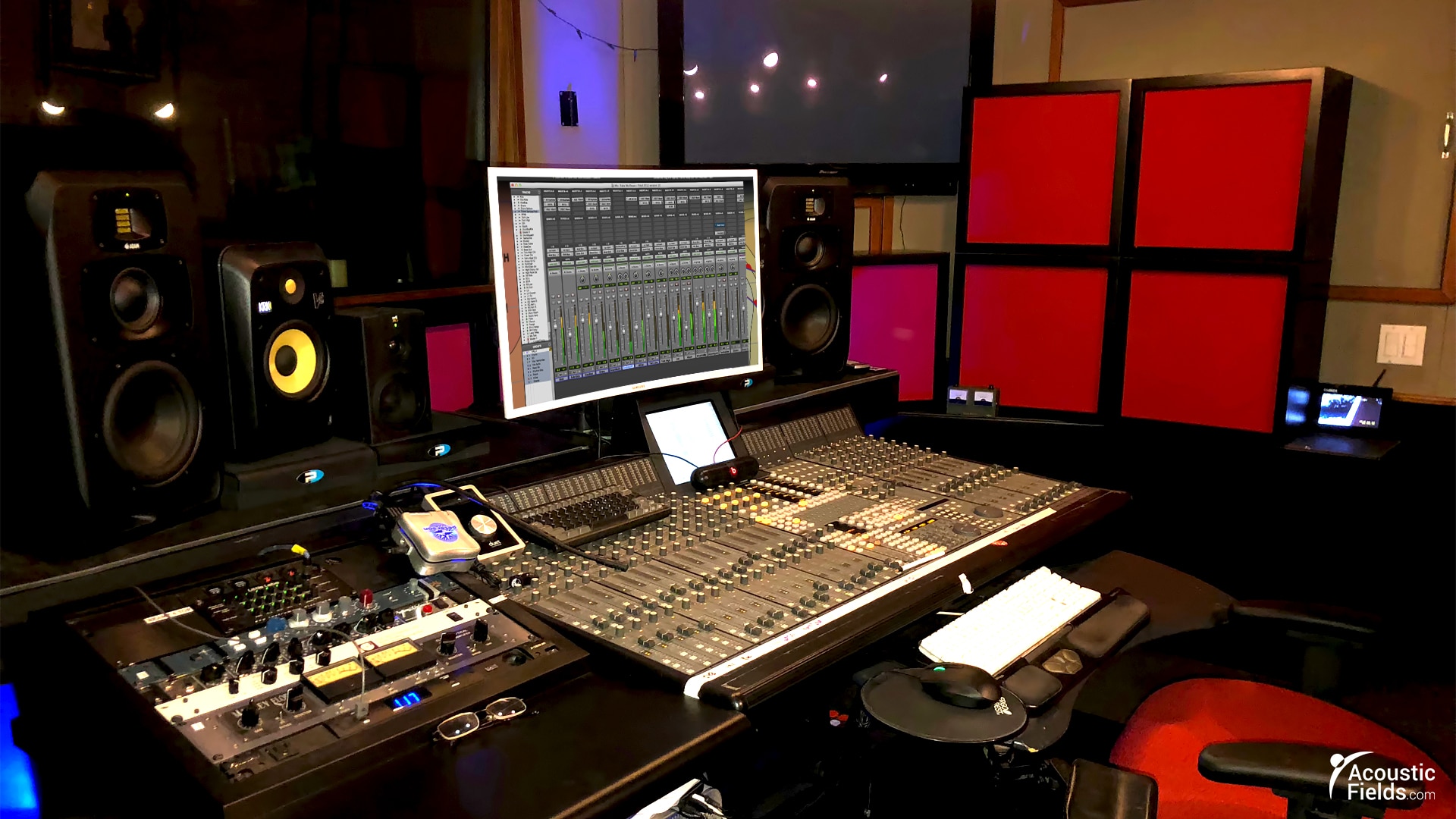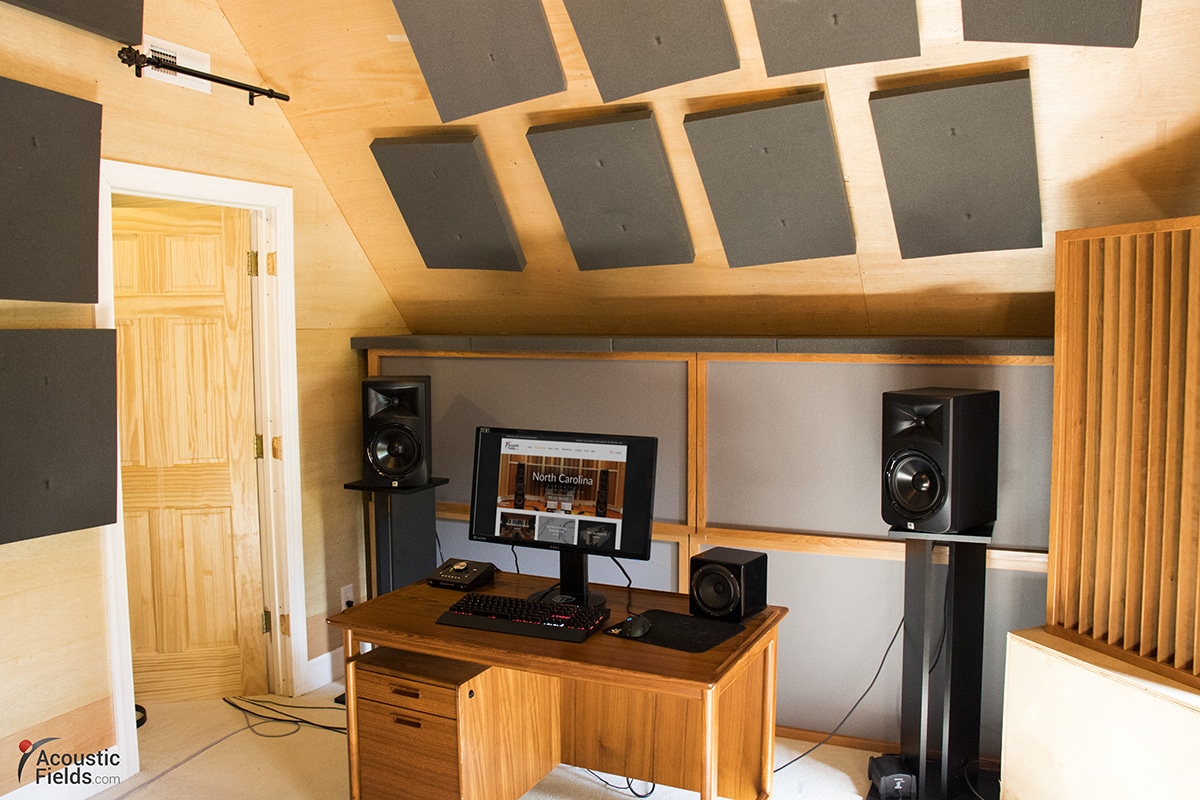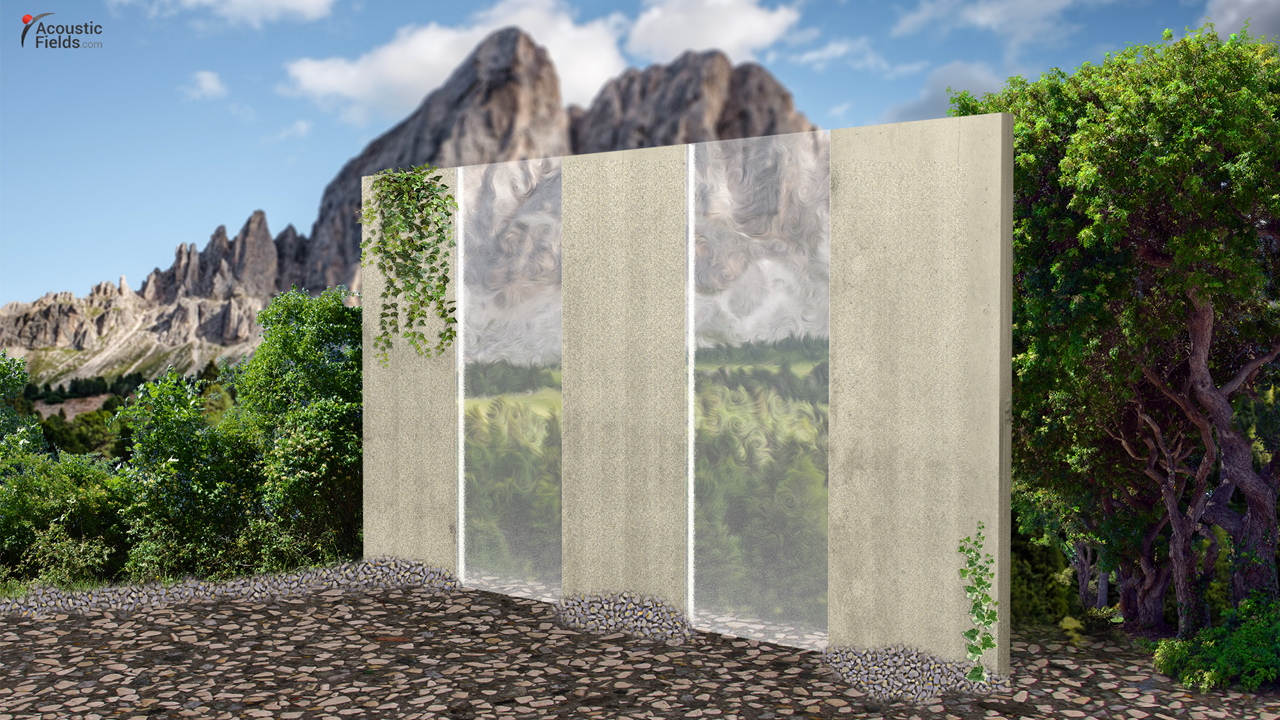I was recently asked if I had any videos or advice on what the best studio acoustic treatment placement for the likes of bass traps, foam and diffusers in a control room situation. Well here we go with a pet peeve of mine, which is good, better, best. If someone tells you something is better, you need to discover that for yourself. You need to do your own testing because that’s someone’s opinion. The acoustics literature is full of opinion when it comes to room acoustic treatment and methodologies but you have to look at your room usage.
In this particular case there’s two schools of thought with the control room and what you have to do is decide which school of thought best describes your particular goals and objectives in that room. You can diffuse the front end or you can use absorption on the front end. A combination of diffusion and absorption, I would completely stay away from on the front end so you can use one or the other.
Combinations get a little bit difficult especially on the sidewalls, especially with one-dimensional diffusion, so I think if we narrow the focus just to absorption and diffusion and then we define those a little clearer, you’ll be able to figure out what’s good for your room.
What are the pros and cons of both?
An absorptive front end yields more detail in the mix, more definition because you are minimizing reflections at the monitoring and listening position. So you’re able to hear the direct sound from your speakers so you’re hearing everything that’s in the mix minus room sound or less room sound. So that’s the goal, getting the room out of the way.
Sound-absorption technology in the control room does that very well. That said, maybe that’s not your preference. Maybe you like a little more air in your mix presentation, maybe you like a little more spaciousness. These are subjective calls, these are personal choices based on how you conduct your business.
If I’m assuming this is a control room then you have a particular product that you are producing in that control room. That product has your signature, your musical input, your musical choices, your musical goals in that product. So the control room is one part of the chain of events that you go through to produce that product. So you need to decide “how am I going to approach listening to the mixes in my control room?” and absorption will give you more detail, set better definition and way less room sound.
Diffusion will give you more room sound
Diffusion will give you more spaciousness, similar definition. So these are fine lines but really different sounds. So my only suggestion to you is to think about what you’re trying to accomplish. Think about the goals of your control room and work on setting the control room up to achieve those goals.
Our DIY sound diffusers can be found in our DIY acoustic treatment section here.
Acoustical products are tools. They’re tools to help you achieve a goal. If you do not know what your goal is then no tool in the world will help you figure it out. You kind of have to decide. Now that said you have to know what the tools are capable of doing because that has a direct reflection on achieving your goals. So absorption, diffusion gives you two choices, two different sound qualities to the mix.
Diffusion on the back wall of your control room
This is an almost universal truth because that back wall slap echo, a lot of engineers use that term, it’s partially correct partially not but let’s forget about that for the time being and just realize everyone that works in a control room is sitting at a position facing monitors. When the energy from the monitors goes past your ears, it heads to the rear wall, well it heads to other places too but let’s just use the rear wall as our example.
It heads to the rear wall and the distance that it has to travel is X. It strikes the wall then it has to come back X plus the distance to the front wall. So you have all this juxtapositioning of sound energy bouncing off all of this surface and at the listening position, that particular reflection from the rear wall is very noticeable at the listening position. Anyone who’s had any experience at a mixing consul can hear that immediately, it’s easily identified and it’s a real nasty thing and you just don’t want it.
So the rear wall has to have some kind of acoustical treatment. Now it can be diffusion or it can be absorption. Absorption obviously reduces the amount of energy because it changes to heat through friction and we have absorption, so we trade off some of the energy that strikes the wall in order to manage it. If that works for your control room, that’s good, that’s a good approach. It’s a lot cheaper than diffusion.
Diffusion’s very expensive
So if the absorption technology works to minimize that reflection from the rear wall, which it will if you choose the correct type with the correct rate and level for your room size, then you’ll be able to manage that through absorption. If you can’t or you don’t want to reduce the energy and you just want to minimize the reflection then you have to go to diffusion.
So here again, it goes back to “what am I trying to accomplish in my control room?”. You know your control room, you know your gear, you know the sound of the room, you know the room sound. So what are you going to do to get what you want using the acoustical tools?
Stay away from good, better, best because. Those are subjective terms that really don’t help you decide because in acoustics there is simply no one-size-fits-all and if you read on the internet or in these forums then, well, “this is the best thing to do”, kind of be cautious about that. Look at what the superlative is being used to describe, look at what the situation is and do your own thinking.
Do your own thinking
I’m really big on having my customers do their own thinking. If you do your own thinking, you know what you want and then you can achieve your goals with the tools. We do have the technology to get you what you want. The hardest thing in this whole process, this design process, is finding out what the customer wants or the end user wants because sometimes they don’t know themselves. So you have to walk them through and help them out which we’re more than happy to do.
But room acoustics is a community project. It’s a project between yourself and the person that’s helping you with the acoustical treatment and design work. So you really have to have a handle on what you want the room to do. Now if you don’t know, well then there are all kinds of ways to get the information to help you with that decision and the designer and the engineer can help you with that because they’re usually familiar with the different options.
The acoustical tools are there if you need them
Now that said, there’s not 40 options, there’s maybe 3 or 4. So your domain of choice is rather small but it is a choice and there are different objectives to achieve. So you have to do a little thinking and consideration on your own. Decide what your objectives are and you’ll know when you sit in that listening chair, you’ll know if what you’re hearing is what you want. You have enough experience with music and obviously if you’re in a control room of your own design with equipment of your own, you know what sound you want to achieve.
There are acoustical tools out there to get that, you just have to have a good handle on what you’re trying to achieve and then be willing to compromise a little bit because most room sizes I see today are so far from ideal that the compromise becomes incredibly great. When it becomes too great where the acoustical treatment can’t solve the room distortion issues, I’m going to be real honest with you and tell you to find another room.
I’m not like other companies, I’m not going to tell you to put a box here and a box there and life will be good because it won’t be and I have the most powerful sound absorption technology ever created and if I can’t help you on the absorption side, nobody can. But I’ll be very honest with you and tell you to focus maybe on finding another room. Sometimes it doesn’t have to be that much bigger. Maybe a foot or two in either direction but that foot or two can make a huge difference in the sound quality of your room.
In Summary
I hope this explanation on your studio acoustic treatment placement options helped. Please leave any comments below so I can get back to you. Don’t be afraid to hit those Facebook like, Google+ and Twitter buttons on the left hand side so other people can see this post. And if you want to learn more about this subject please sign up for our free room acoustic treatment videos and ebook which provide step by step instructions. Get instant access by signing up now. And if you would like your room acoustic issues analysed for free by me then please fill in the form here and I will be happy to take a look for you.
Thanks
Dennis









It’s true that there is no single best option. In professional recording, you will see multiple setups to accommodate the needs of the recording group. I like the DIY section. It would be cool to make some of these for more casual use. Thanks for the article!
Hi Claude,
Our DIY product line is the result of our using prototypes we built and tested for low frequency, middle and high frequency diffusion, and absorption. All of the BDA , Foam panels, and Diffuser builds have products that have been built and in the field for at least five years. To date, there have been no defects in over a 1,000 units.
The drawings are direct and straight forward and many customers have offered and we have implemented their suggestions. I am always available to answer any build questions.
Thanks for the support.
Dennis